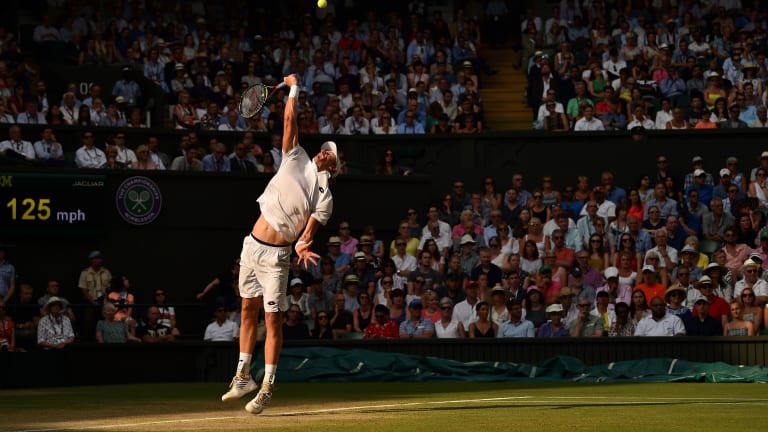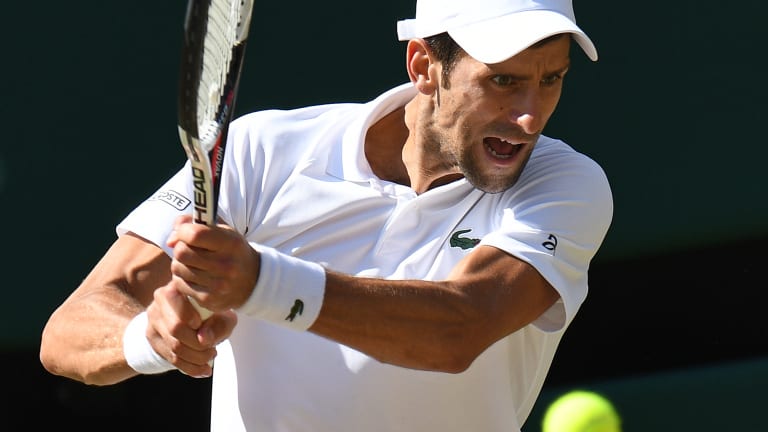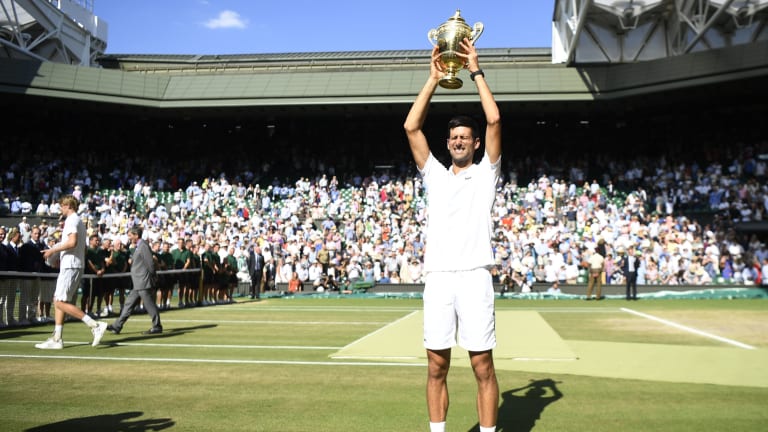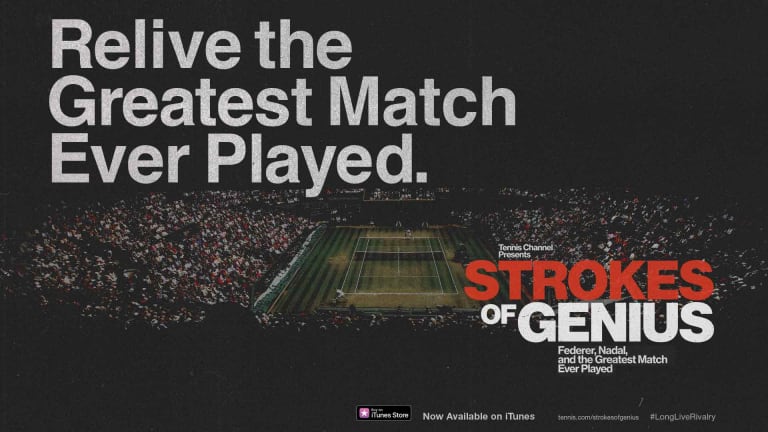Still, it was inevitable that the match would get closer at some point. Anderson’s body finally seemed to loosen up, and Djokovic finally tightened up, in the third set. What was most impressive was the way Djokovic fought to keep the match from going to a fourth set. He faced five set points at the end of the third, and, from what I have written down, he got five first serves in. Anderson never had a good look.
That was exactly the way Djokovic beat Nadal in the fifth set in the semifinals, and it was exactly the way one of Djokovic’s rivals, Roger Federer, has won so many matches on Centre Court: By coming up with a first serve when he needs it.
Now Djokovic joins Federer and Nadal in the over-30 comeback club. If anything, Djokovic’s re-ascendance is the most sudden and surprising to me. Two months ago, both of us sat in the press room at Roland Garros and saw how disconsolate he was after his loss to Marco Cecchinato. He said he wasn’t sure he would even play on grass this year; today he celebrated by eating another piece of it on Centre Court.
How much does Djokovic’s title run surprise you, Joel? And how do you think it compares to Federer’s and Nadal’s similar comebacks?
*
Steve,
Djokovic was indeed increasingly out of sorts these last two years that it was hard to imagine him winning Wimbledon. A run to the quarters or semis here? Sure. But the performances of Federer and Nadal have been so impressive these last two years that it was hard to clear headspace for Novak as a bonafide contender.
And yet, how dare any of us not seriously take the chances of a three-time Wimbledon champion? So that said—yes, I was surprised to see him raising the trophy, even though I shouldn’t have been. After all, it was only two years ago that Djokovic arrived at Wimbledon as the holder of all four majors.
Nadal’s comeback was expected, and certainly at Roland Garros. Given Federer’s age and stage, his return to glory has been the most surprising.
So in some way, are we back to where tennis was ten years ago? This is where things stood circa 2008: Roger and Rafa the romantic leads, with Novak putting himself right in the thick of it with his own great performances. Djokovic’s skills, his commitment and his fitness have long been exemplary, and certainly proven effective on high stakes occasions versus both Federer and Nadal. The Wimbledon win over Nadal was a gem, a classic testimony to each player’s skill, an amazing rivalry and, in the end, Djokovic’s remarkable resilience.



